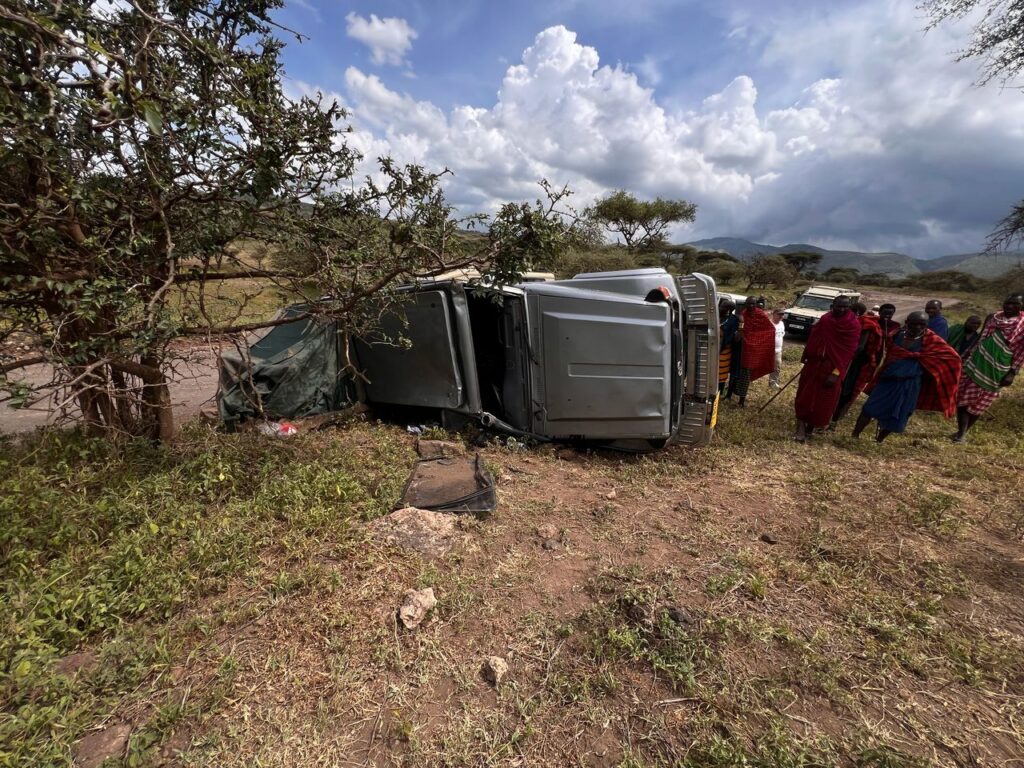Self Drive Tanzania
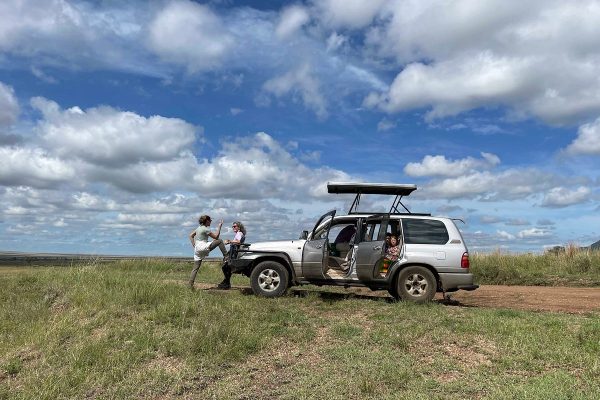
Self Drive Tanzania provides travelers the opportunity to explore its breathtaking landscapes, diverse wildlife, and rich cultures at their own speed. A nation characterized by enchanting historical towns, remarkable fauna, unspoiled beaches, archaeological sites, and varied terrains, including towering mountain summits, vast open plains, and virgin islands, merits a visit. If you desire encounters with East Africa’s animals, pristine beaches, and an invigorating ascent of Mt. Kilimanjaro, then Tanzania is the ideal destination for a 4×4 self-drive safari. Tanzania, featuring the renowned Serengeti, Ngorongoro Crater, and Mount Kilimanjaro, provides one of Africa’s most exhilarating self-drive safari experiences.
Tanzania is a genuine paradise of fauna. Boasting steady populations of African wild dogs, cheetahs, elephants, and over 50% of the global lion population, it is unsurprising that it has rapidly ascended to the second position worldwide for safari vacations. However, it is not only fauna. It encompasses several Indigenous groups like as the Hadzabe and the slopes of Kilimanjaro within its territory.
I would assert that it ranks first in independent travel and diversity. Anticipate rugged terrains featuring arid deserts and contorted Baobab trees, national parks situated within volcano craters, and vast salt lakes – and that merely constitutes the Northern circuit of the nation! Tanzania is among my preferred places in East Africa; despite being one of the priciest, this Self Drive Tanzania Itinerary will elucidate why I believe a road trip through the country is very worthwhile. Here is how to maximize the experience of a road trip in Tanzania. This article offers valuable insights for planning an ideal trip to Tanzania in less than two weeks, regardless of whether you want to self-drive safari in Tanzania
Book your Car For Self Drive in Tanzania
4x4 Toyota Rav4
4x4 Land Cruiser TX
4x4 Nissan Patrol
4x4 Toyota Hard Top
4x4 Coaster Bus
4x4 Safari Land Cruiser
4x4 Safari Van
4x4 Toyota Hilux
What to Know About Sel f Driving in Tanzania
Tanzania is renowned for its game parks. The 4×4 Self Drive Tanzania safari insider features more than 20 National Parks, including the globally acclaimed Serengeti National Park and Ngorongoro Crater in the north, alongside the Selous Game Reserve and Ruaha National Park in the south, as well as smaller parks such as Tarangire National Park, Lake Manyara National Park, and Arusha National Park in the northern region.
Self Driving to Tanzania’s National Parks is feasible, economical, and ensures thrilling experiences with remarkable animal observations at your convenience. Typically, criminal activity is not a concern within Tanzania’s game parks and reserves. Despite the presence of numerous perilous animals in the bush, one can ensure safety by adhering to park rules and regulations and consistently heeding the guidance of your instructor. Essential guidelines for secure travel in Tanzania’s national parks encompass remaining inside the confines of the safari vehicle at all times (unless instructed otherwise regarding safety for disembarking or participating in a nature walk) and inspecting footwear for deadly spiders and scorpions before to wearing them. Avoid feeding wild animals that approach you at campsites, as it promotes aggressive behavior. Primary routes connecting towns and cities are predominantly well-paved. Nevertheless, the minor arterial roads leading to and from the national parks are frequently unpaved and rugged.
For individuals seeking to explore this enchanting country further, a Tanzania Safari to Selous Game Reserve and Ruaha National Park is highly suggested, provided you possess the requisite time, a suitable 4×4 vehicle, and are willing to endure some discomfort. Refrain from undertaking self-drive safaris during the rainy season, as you are likely to devote more time extricating your car from deep mud holes than touring the parks. It is advisable to visit Tanzania during the dry season, recognized as the optimal period for travel, specifically from June to September and December to February. Reserve with us immediately
Travelers undertaking a 4×4 self-drive in Tanzania are advised to adhere to speed restrictions and road laws consistently; herein, we furnish the required information for planning your safari. The speed restrictions and road regulations encompass;
Car rental for self Drive in Tanzania
Take it easy and enjoy your self-drive experience in Tanzania with 4×4 Car Rental, Drive across Tanzania in a robust 4×4 at your leisure. Our dependable service and support are here for you 24/7, no matter where you are. Avoid driving alone if at all possible. For only €40 a day, you can hire a professional driver-guide who will add local knowledge and insider suggestions to your road trip, making it even more fun. For those interested in self-drive vacations in Tanzania, 4×4 Car Rental is the pioneer in the industry. We take full ownership of our rental cars and never use outside vendors.
The vehicles that make up our fleet are Suzuki Escudos and Toyota Land cruisers. All four-wheel drives are dependable and commonly utilized, so they will be ideal for your exciting road adventure in Tanzania.
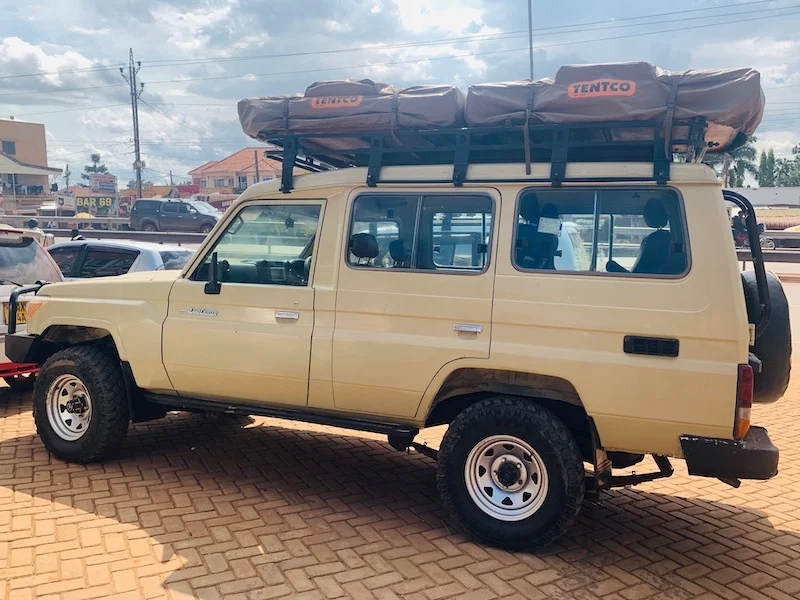
In what ways does Tanzania stand out?

Tanzania boasts an incredible variety of plant and animal life, as well as the world’s tallest mountain (Mt. Kilimanjaro) and largest complete crater (Ngorongoro Crater), making it a really remarkable country. In Zanzibar, you can discover beautiful, unhurried shores. With twenty-two national parks, it is one of the best places in the world to witness the Big Five, which is great news for safari enthusiasts!
Are honeymoons in Tanzania a smart idea?
Yes, without a doubt, since it was the site of my honeymoon. No matter what kind of honeymoon you’re looking for—action, romance, or relaxation—there are plenty of activities to choose from. Popular vacation plans include climbing Kilimanjaro, going on a safari, and ending the trip with some beach time in Zanzibar.
In what ways does Tanzania stand out?
The things you want to accomplish while in Tanzania will determine the ideal time to visit. In general, the high/dry season, which lasts from June to October, is the ideal time to visit Tanzania. The off-season begins in November and ends in May.
Is there a certain season in Tanzania when a self-drive safari is at its most enjoyable?
Animals congregate around watering holes during the dry season (June–October) in national parks, increasing the likelihood that you might see them. Traveling between December and March will let you to see the calving season, while August and September are the finest months to see the Mara river crossing along the big migration. Beginning in early to mid-October, smaller herds are still crossing. When October and November come to a close, the herds make the journey back from Kenya into the Serengeti.
Renting a car and driving in Tanzania
A little apprehensive throughout the planning phase, we discovered very little online about self-driving safaris in Tanzania while arranging our road trip. We arrived and discovered why: this is still very unusual. Most tourists don’t drive themselves but instead join pre-arranged trips with a driver or driver-guide.
It is an ideal destination for road trips, as I can attest from my personal experience on a self-drive safari in Tanzania. But I wouldn’t suggest it to everyone, particularly Africans who aren’t experienced drivers. An “adventurous” road trip through Tanzania is possible from time to time; more on this later. Be prepared, have some patience, and be able to handle tension; not all roads are simple to drive. If this is your first time going on a self-drive safari, I would suggest starting in a more manageable country like South Africa or Namibia. To access a comprehensive guide on organizing a road trip to Tanzania
Double Rooftop Tent Land Cruiser GX
Pop-up roof Land Cruiser Prado TX
Hardtop Land Cruiser 70 series
4×4 Camper Landcruiser
Can you self-drive on safari in Tanzania?
During our road trip planning, we discovered scant information online regarding self-driving safaris in Tanzania, which occasionally caused us some apprehension in the planning phase. Upon our arrival, we observed the reason: it remains relatively rare to engage in this practice. The majority of visitors participate in organized tours accompanied by a driver or driver-guide, rather than opting for self-driving.
Following our self-guided safari in Tanzania, I can assert that it is a veritable paradise for road-tripping. Simultaneously, I would not endorse it for everyone, particularly novice self-drivers in Africa. Further details are provided below; however, a road trip in Tanzania can occasionally be described as adventurous. Not all roads are easily navigable; one must plan in advance and possess a degree of patience and resilience to stress. For anyone seeking to undertake a self-drive safari for the first time, I strongly recommend commencing in countries like Tanzania , which are relatively easier to navigate.

Rules And Regulations of Self Drive in Tanzania
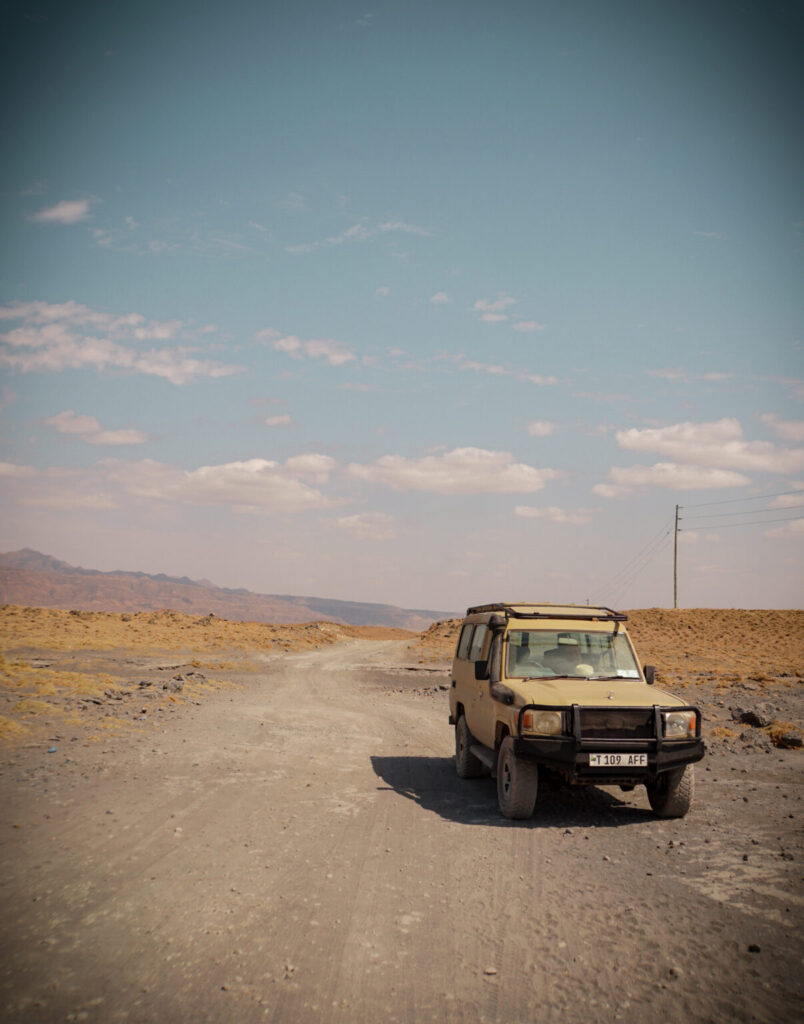
- A traveler should not exceed a speed of 80 km/h on a tarmac road. A traveler should not exceed a speed of 50 km/h while on a gravel road. On the dirt track, the traveler must not exceed a speed of 40 km/h. This consequently mitigates the risks of road accidents predominantly attributed to excessive speeding.
- Four-by-four self-drive Travelers in Tanzania are advised to inspect their radiator coolant each morning prior to embarking on their journeys.
- Self driving Travelers are advised to maintain their headlights on during daylight on tarred and unpaved roads to enhance their visibility to approaching vehicles. Enhanced visibility significantly diminishes the likelihood of accidents attributable to poor visibility.
- Avoid nighttime driving, as pedestrians, both wild and domesticated animals, utilize the road at night, and vehicles frequently operate without lights. Driving within the parks at night is prohibited unless one has arranged a sanctioned night game drive with the park authorities.
- Self-drive Tanzania Travelers are prohibited from venturing off designated paths within the park. Consistently adhere to the paths designated by the park authorities.
- Self-drive Tanzania Travelers are advised to reduce speed upon encountering animals. Do not harm any wild animal, as this may result in a penalty.
- Self-drive Tanzania Travelers are cautioned against operating a vehicle with 4WD (4H or 4L) engaged at speeds exceeding 20 KMH, as this may inflict significant damage to the vehicle’s differential lock. It should be utilized solely when indispensable, as it will limit the vehicle’s steering control; ensure that you disengage it once you have extricated yourself from being immobilized.
- Self-drive travelers are advised against overloading the vehicle with passengers and should refrain from providing transportation to strangers. Tanzania, like any other nation, experiences instances of petty crime, and one may become a victim of such offenses.
Summary overview of drive times:
- Arusha to Serengeti (Seronera): 315 km (ca. 9-10 hours)
- Arusha to Karatu: 140 km (ca. 3,5 hours)
- Karatu to Loduare gate (entrance to NCA): 15 km (ca. 30 min)
- Loduare gate to Ngorongoro crater entrance: 15 km (ca. 1 hour)
- Ngorongoro Crater entrance to Naabi Hill Gate (Serengeti entrance): 85 km (ca. 3-3,5 hours)
- Naabi Hill gate to Central Serengeti (Seronera): 60 km (ca. 1-2 hours)
- Seronera to Lobo Ranger post: 80 km (ca. 2 hours)
- Seronera to Kogatende: 160 km (ca. 4-6 hours, depending on road conditions)
- Kogatende to Klein’s Gate: 70 km (ca. 2-2,5 hours)
- Klein’s Gate to Lake Natron: 160 km (ca. 4-6 hours)
- Lake Natron to Mto Wa Mbu: 110 km (ca. 3-4 hours)
- Mto Wa Mbu: 115 km (ca. 2-2,5 hours)

4x4 Car Rental In Tanzania for Self Drive With A rooftop Tent
Self-Drive Car Rental with Rooftop Tents in Tanzania. self Drive with a rooftop tent offers a distinctive and daring means of exploring Tanzania. The area is renowned for its varied landscapes, fauna, and cultural legacy, rendering it a favored locale for tourists in pursuit of a unique experience. This book will furnish you with comprehensive knowledge necessary for orchestrating a successful self-drive safari utilizing a rooftop tent in Tanzania.
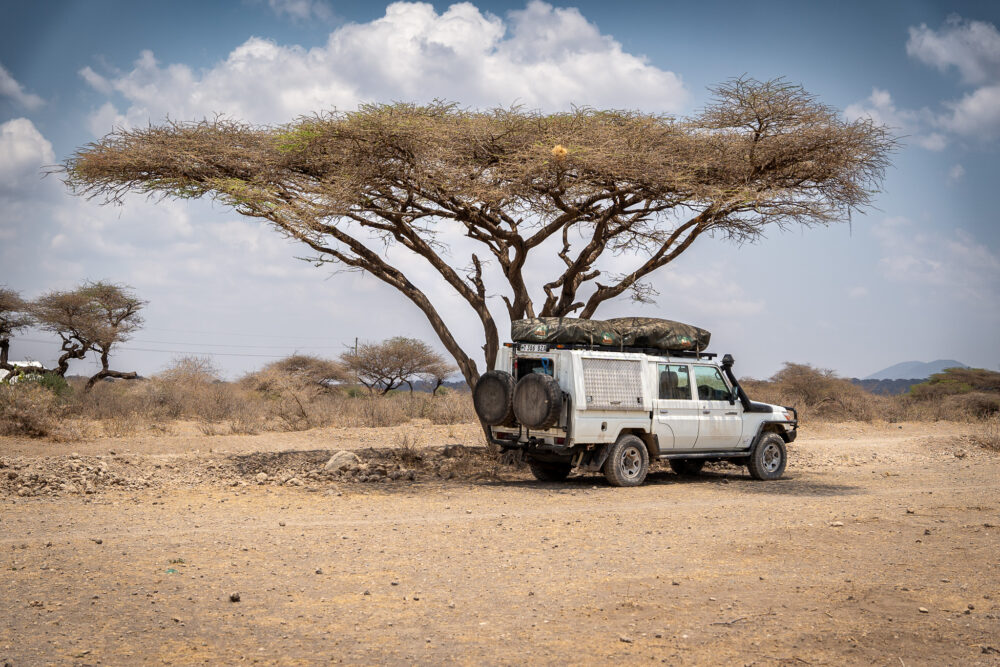
Self-driving with a rooftop tent in Tanzania enables exploration of the region at one’s own pace and according to personal preferences. You have the autonomy to determine your destination, the timing of your pauses, and the duration of your stay at each locale. It also affords you the liberty to camp in secluded areas devoid of motels or hotels, offering a distinctive and genuine experience of the African environment.
To self-drive with a rooftop tent in Tanzania, one must possess a valid driver’s license from their country of origin, an international driving permit, and a valid passport. Additionally, it is necessary to acquire a temporary importation permit for your vehicle from the appropriate authorities in each nation you intend to visit. Moreover, it is prudent to obtain extensive travel insurance that encompasses medical costs, vehicle damage, and theft.
Is it safe to rent a car & self-drive in Tanzania?

Positive: It is indeed safe.
Yes, provided that certain considerations are taken into account:
Ensure adherence to the aforementioned “common sense” guidelines.
Adhering to road safety guidelines. Specifically: refrain from exceeding speed limits, avoid nocturnal driving, and do not operate the vehicle recklessly. Road conditions are inadequate in numerous regions of Tanzania, particularly in the Serengeti and near Lake Natron. This significantly increases the propensity for accidents or the probability of experiencing a flat tire or similar issues.
Acquire a 4×4 vehicle equipped with appropriate accessories (extra tires, etc.). Maintain a full gas tank and ensure an ample supply of water is readily available.
Selection of Car Rental: 4x4 Car Rental for self Drive in Tanzania
We conducted extensive web research and evaluated numerous providers. Ultimately, we chose “Roadtrip Africa” for our self-drive safari in Tanzania. They possessed valuable knowledge to facilitate the planning of the road trip logistics and a prompt personnel to address any inquiries. We chose a Toyota Landcruiser Hardtop featuring a pop-up roof, ideal for safari excursions.
Advantages of Self Driving in Tanzania
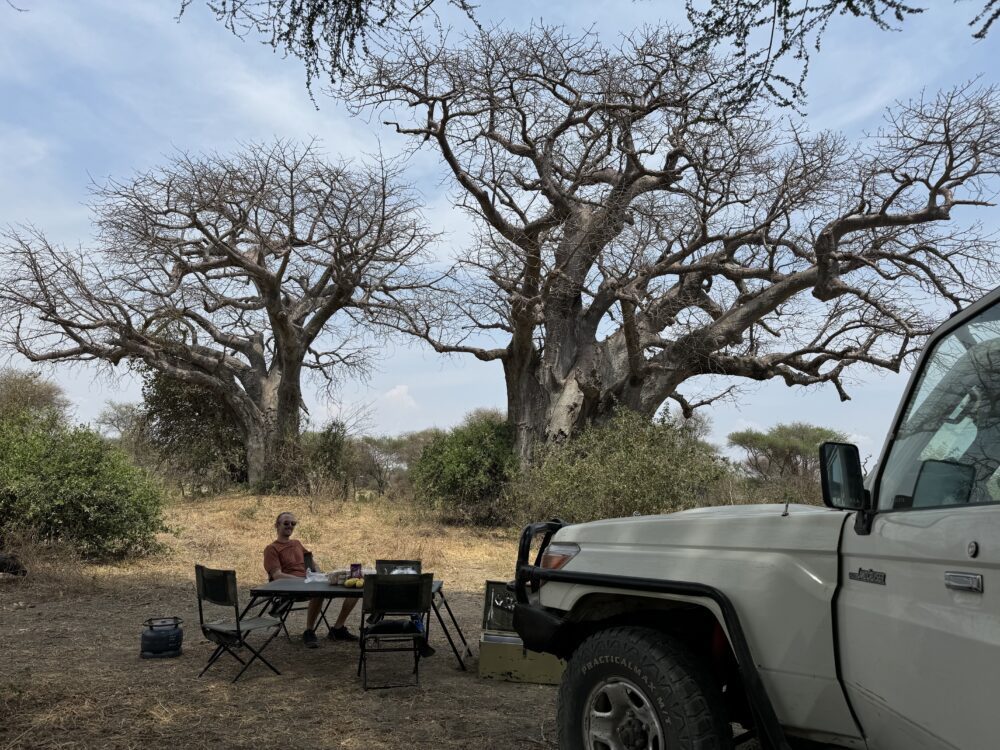
Flexibility: Self-drive camping vacations provide the autonomy to organize your itinerary based on personal preferences.
Determine whether to observe birds, concentrate on elephants, or allocate additional time in a park.
Avoid traveling with unfamiliar individuals and prioritize your own requirements.
Embark on an adventure by independently traversing the wilderness.
Local Encounters: Increased opportunity for direct interaction with locals without a guide facilitating all engagements. Ultimately, we were quite satisfied with our decision. They collected us at JRO Airport with our vehicle and provided instructions on driving, utilizing the roof, and repairing a flat tire, among other details. They offer unlimited mileage.
Disadvantages of Self Drive In Tanzania
Regrettably, there were several drawbacks to our renting experience. The rental refrigerator was nonfunctional, and obtaining a return required several weeks of pursuit. The vehicle was aged (250,000 km) and lacked air conditioning. While this practice aims to extend the vehicle’s longevity, it proved suboptimal in certain locations, such as Tarangire National Park, where the intense heat precluded the opening of windows due to the presence of tsetse flies.
Moreover, we estimated the vehicle’s “lifespan” to be approximately two weeks. Subsequently, during our segment at Lake Natron, the vehicle encountered numerous problems. A pipe ruptured, causing a leak of clutch fluid, resulting in our vehicle breaking down in a remote location between Kleins Gate and Wasso. The front of the vehicle became lodged, and our spare tire detached from the rear of the Car in the sand at Lake Natron.
